Hi friend,
I’m writing to you from the rural town of Kanazawa, Japan. Specifically, I'm writing from one of the only three Starbucks coffee shops that operate in this region and offer oat milk matcha with a cute sticker on the cup.
This is the fourth city stop in the past week and a half. I’ve been traveling, and it’s been the most relaxing so far. There’s something about walking around a historical town that feels peaceful. There’s no bustling city where everyone hustles to go from one location to another. There’s no need to shove your way onto the train and end up getting squished with other passengers. And there’s no need to dodge people left and right when crossing the street. I didn’t realize how much of my energy had been spent trying to navigate city life until I visited Kanazawa. When my family and I walked around after a three-hour train ride from Nagoya looking for food, only two other people were walking in the opposite direction on the same block.
While the allure of small-town life always creeps up on me this time of the year, I don’t think I’m ready to take the jump and live somewhere extremely quiet. In approximately ten weeks’ time, I’ll go from walking on smooth concrete pavements in a metropolis to the cobblestone streets of a medieval town that’s still densely populated. Just thinking of this upcoming move for college makes me feel relieved that I’ll still be in a city. I still take comfort in being surrounded by people - just not an extreme amount to be considered crowded.
This time last year, my dream of small-town life manifested into a goal of attending any East Coast liberal arts college with nothing but nature all around me. Life had other plans, and I know now that living in a place with ‘two other people walking on the same street as you’ is just a temptation that isn’t aligned with my other career and lifestyle goals.
Perhaps a temporary solution to the strong desire to hide out in a tiny town would be spending short bits of holidays doing just that and seeking some silence.
My mom says Kanazawa feels a little ghostly – the town is so quiet in the evenings that a slight rustle of the trees swaying in the wind or the woosh sound of a car driving on the road can be heard instantly. After a while, the quietness made my whole family feel slightly unsettled, especially when we walked through an empty fish market with stalls illuminated with a few small lights at 5 pm. It wasn’t completely dark yet, but everything felt deserted.
When we arrived to our hotel, we were instructed to take our shoes off in the lobby and put them in lockers. Our luggage wheels were delicately wiped down with towels by the receptionists, and we wheeled them barefoot on the tatami mats made of straw that covered every floor surface in the building. We would only be able to wear our shoes when we needed to go outside, and it definitely was an odd feeling to walk in an elevator without shoes on. (Side note: I was amused by the tiny seat in the corner of the elevator which kept medical supplies, food, and water. It also doubles as a toilet seat for bathroom-related emergencies in case it broke down. Well prepared indeed.)
The shared bathing rooms took up the top floor of the hotel. We had access to gender-separated communal showers with open stalls and tiny wooden seats lined up in rows. Behind the showers was the onsen which consisted of two giant hot spring baths - one indoors and one outdoors that’s accessible by sliding door. Outside the shower room was the locker room, where we were instructed to keep our towels and clothes in a cubby and go full nude. It’s custom.
After an evening of onsen, there was a restaurant on the second floor of the hotel that invited guests to slurp down free ramen bowls before bed. You bet my ramen-loving brother had more than one bowl. I can also testify that it was delicious.
I forgot to add. They also gave free flow ice cream in four flavours. I pretty much scarfed down as many as I could over the course of two days.
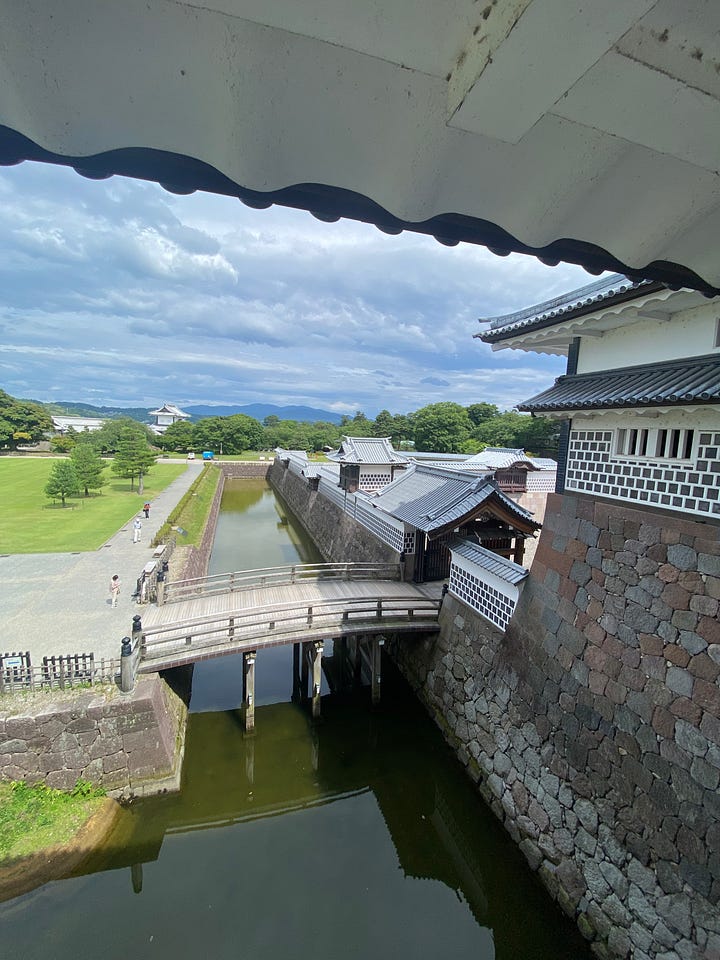

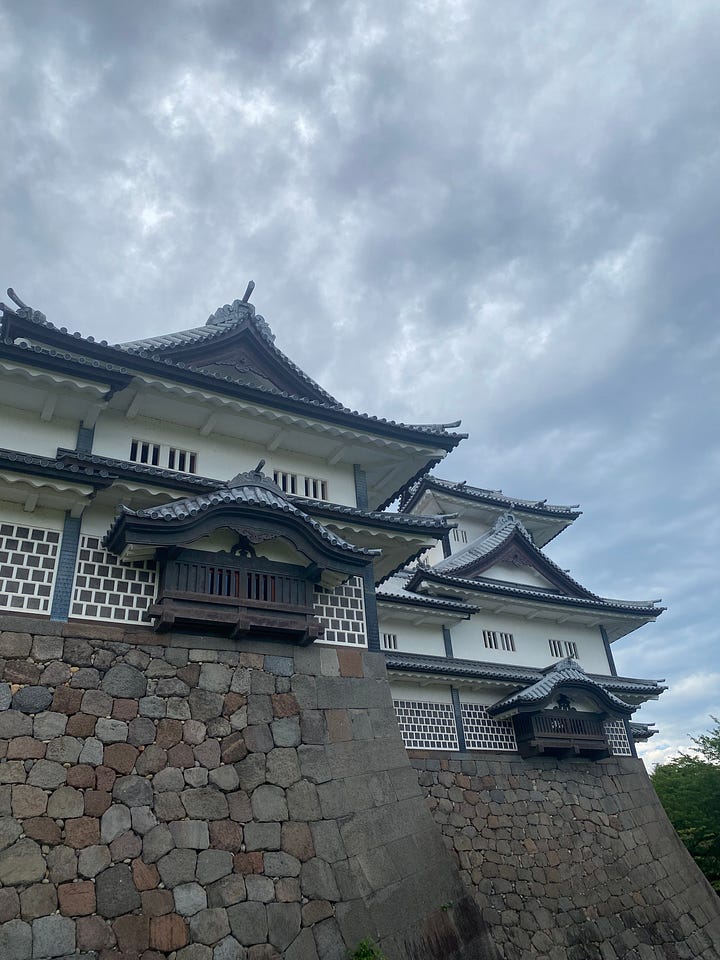

Kanazawa is known for it’s well-preserved Edo Period (1603-1868) architectural relics. We visited Kanazawa Castle, originally established in the late Muromachi Period (1336-1573) which was painted white and had a full moat surrounding it. I got to see and stand in one of the buildings that was made by slotting pieces of wood, stacking it, and combining it with stone. It didn’t need intense concrete or metal to create its structure. In several corners, the floor was purposefully left open so that soldiers could drop rocks on enemies that tried to scale castle walls.
As an architecture nerd, it was cool to see one of the great accomplishments of Japanese woodworkers. As someone with extreme anxiety, my mind wandered from wondering unnecessarily about whether termites caused structural damage that hasn’t been detected yet or if the wood isn’t as strong as it’s believed to be. But, I think the bigger worry that many Japanese had when they built it at the time was the risk of the castle catching on fire. I learned that the buildings in the area, including the castle that was reconstructed, burned down six times in a century, so the castle I walked through was definitely not the first iteration. They really followed the quote “If at first you don’t succeed, try, try again.”
The last thing I want to share about my short stint with small town life is a tiny adventure spent wandering around. We walked through a residential village and saw an open garage sale. The owner was learning how to fix one of the many bikes he had on display while watching an instructional YouTube video, and was called outside to his makeshift shaved ice stand - sans ice - after a young schoolboy stopped by to chat with him. I assumed their conversation included the question of, “Where’s the ice? Are you selling any today?”
Obviously my family and I were intrigued. What a random combination of things to sell. This owner had neat shelves of old record sleeves, pin buttons, shirts he designed, and also a ton of glassware ceramics. My mom, the ceramic-ware enthusiast, immediately wanted to buy everything. While I did look at what was on display, my eyes could not peel away from a little Shiba dog lying down peacefully in the corner of the garage by his owners’ feet.
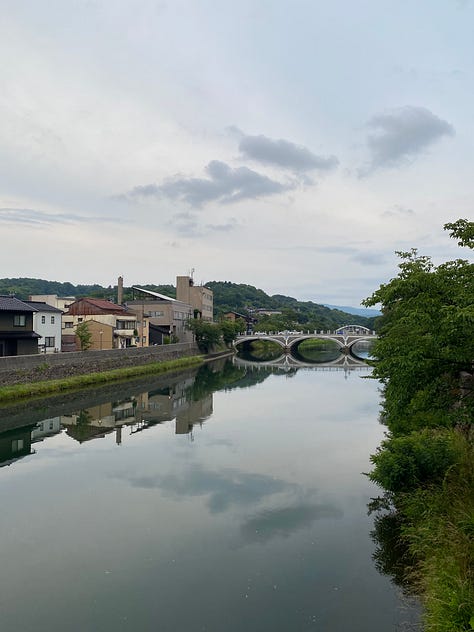

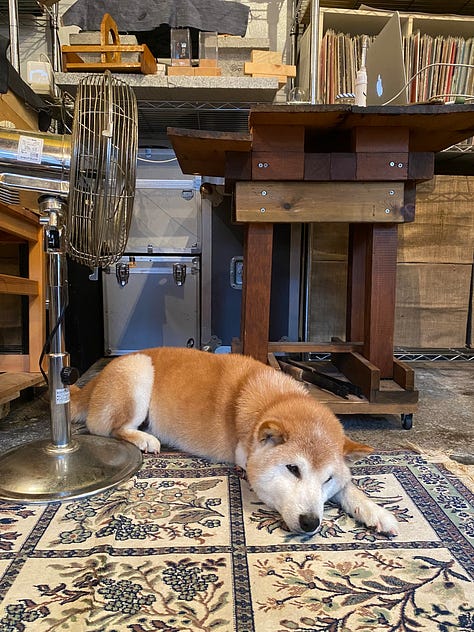

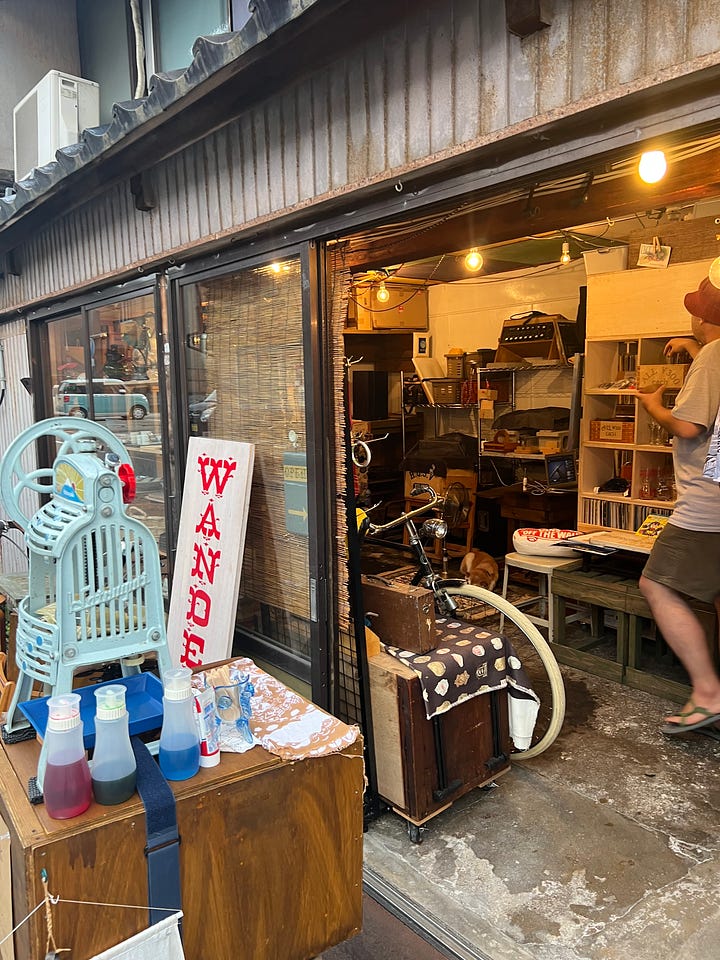
After petting the dog, we learned from the owner that his name is George, and that they don’t know his age since he was a rescue. When George stood up, I didn’t realise that he only had three legs. His owner shared that he lost one to cancer. He limped towards us and nuzzled his nose against my hand.
Needless to say, it was a hard goodbye.
Overall though, it was a wonderful few days spent in Kanazawa. This castle town is an escape from big city life full of culture, heritage, insane architecture, kind-hearted souls, and good food (as always). My greatest accomplishment would be ordering off the Japanese character menu at a sushi counter after piecing together words that look similar to Chinese. Or, it might be not getting sick after buying discount sashimi for $5 at the market. Actually, scratch the latter, everything was fresh in that market, even at the end of the day when they mark the price down to get rid of stock.

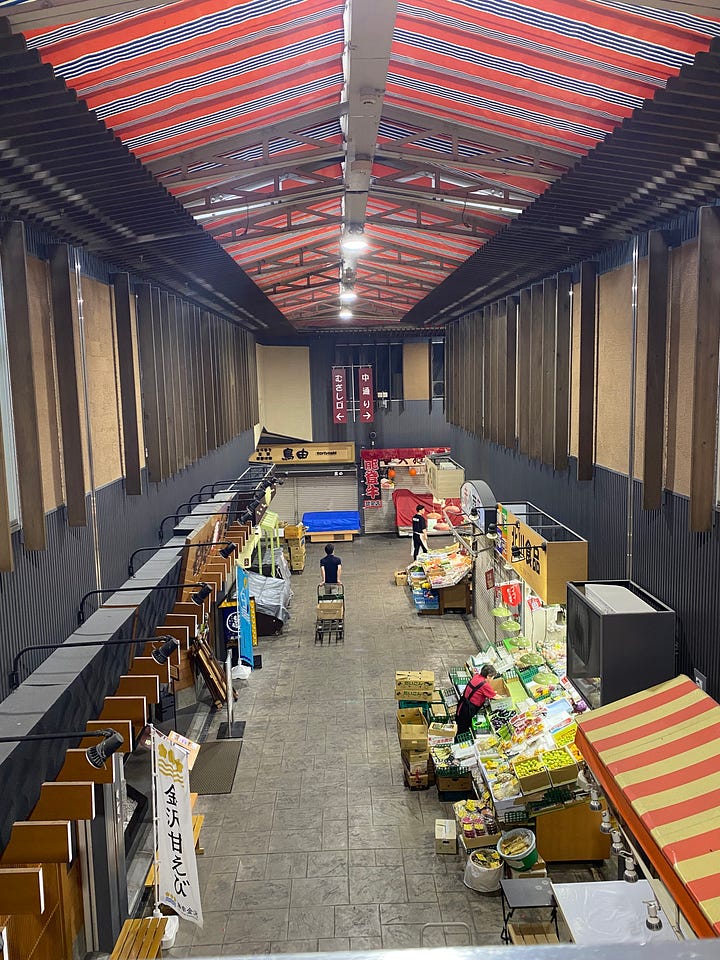
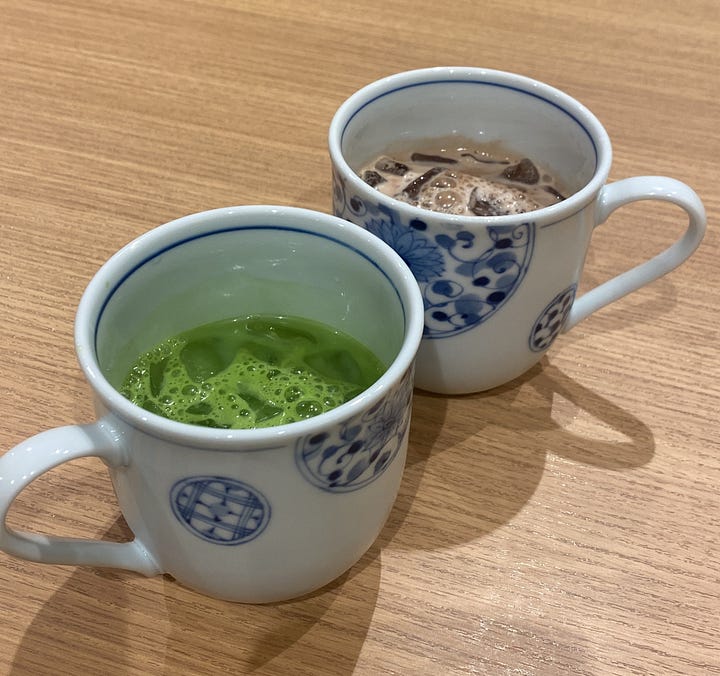

Arigato!







just lovely